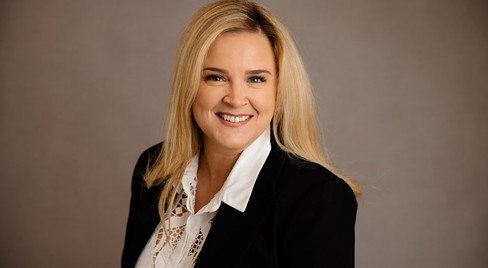The UK government overhauled tax incentives for innovative companies, replacing the existing R&D tax credit schemes with an entirely new scheme, the Merged Scheme. For many UK businesses, this was not good news, as it resulted in a decrease in their tax savings. However, there was a silver lining for loss-making small companies, who now have their own scheme to claim at a higher rate.
The Enhanced R&D Intensive Support scheme, or ERIS, puts more money back in the pockets of the most innovative companies, incentivising R&D for these smaller, risk-taking companies.
What is the ERIS scheme?
The Merged Scheme was the biggest announcement in recent years regarding the UK’s R&D tax incentive. It will replace the existing Small and Medium Enterprise (SME) and R&D Expenditure Credit (RDEC) schemes, simplifying the claiming process and levelling out the benefits companies can receive. The merged scheme will largely follow in the footsteps of the RDEC scheme, with some key exceptions in costs claimed and rates.
The merged scheme will be the only scheme available to innovative businesses; the only exception to the merged scheme is the Enhanced R&D Intensive Support (ERIS) scheme.
The ERIS scheme is only available to loss-making SMEs that meet the R&D intensity condition. Eligible companies can claim back up to nearly a third of qualifying R&D expenditure.
The ERIS scheme has the same definition of R&D as all other schemes. Companies that seek to improve the state of the art by developing new or improved products, processes, methods, materials or services may be able to claim.
Why was it introduced?
In 2023, several changes were made to the R&D tax relief schemes, including the introduction of the R&D-intensive SME scheme in the Spring Budget, as an option within the existing SME scheme. The merged scheme was also announced, which would simplify the R&D tax landscape but would also reduce the tax savings offered to UK companies.
While the new scheme is much easier to work with, no longer offering different rates for different size companies, there was concern that small loss-making companies were getting the worse end of the deal.
Thus, HMRC updated its R&D-intensive SME scheme to the ERIS scheme, keeping this lifeline open for loss-making innovative companies. It was formalised into its own scheme alongside the merged scheme.
Who can claim through the ERIS scheme?
Only loss-making SMEs who meet the intensity threshold can claim through the ERIS scheme.
What’s an SME?
An SME is a company with:
- less than 500 staff
- a turnover of under 100 million euros OR a balance sheet total under 86 million euros
You should include linked or partner companies in this total. The proportion of the staff, turnover and balance sheets of group companies is based on the percentage of voting rights and capital that connects the enterprises.
What’s a loss-making company?
A company is loss-making if it makes a trading loss for tax purposes before the additional deduction is taken.
What’s the intensity threshold?
As this scheme is designed to benefit loss-makers investing heavily in R&D, HMRC introduced an R&D intensity threshold to help the bigger risk-takers in the scheme.
For costs incurred from 1st April 2023, loss-making SMEs with an R&D intensity of 40% or more qualify for additional relief. This means a company’s eligible R&D costs must be at least 40% of its total expenditure.
However, following the announcement of these new measures, claimants and advisors argued that a 40% threshold was too high. The Autumn Statement then announced a reduction in the R&D intensity requirement and formalised the scheme under the ERIS name.
For accounting periods beginning on or after 1st April 2024, a company’s eligible R&D costs must be at least 30% of its total expenditure to meet the intensity threshold.
Companies will need to meet the condition for the period of the claim. However, there is a grace period for companies who met the threshold in the last accounting period and made a valid claim for SME or ERIS tax credits for expenditure incurred on or after 1st April 2023.
Relevant expenditure
Depending on your accounting period, at least 30% or 40% of your total expenditure needs to be “relevant R&D expenditure”, which means costs that you could claim R&D tax relief on.
The R&D expenditure needs to be 30% or 40% of the “total relevant expenditure”, which includes:
- Costs that are brought into account under Generally Accepted Accounting Practice (GAAP) in calculating the profits of a trade
- Any pre-trading costs on which relief would be available
- Any amounts deducted in the tax computation
It does not include:
- Any amount of amortisation added back in the tax computation
- Any costs which consist of a payment, or other transfer of value, to another connected company
Total relevant expenditure should also include the expenditure of connected companies.
When does the ERIS scheme come into effect?
The scheme applies to qualifying companies with an accounting period beginning on or after 1st April 2024.
Companies are not able to choose to claim through the SME or RDEC schemes of the past, even if they happen to be more favourable. If a company doesn’t meet the above criteria, it will have to claim through the merged scheme.
However, companies can also claim the higher rate under the SME scheme if they meet the 40% R&D intensity threshold for expenditure incurred from 1st April 2023 (see above).
How much is the ERIS scheme worth?
Without getting into the details (see below for the breakdown!), eligible companies can claim back 26.97% of their eligible R&D costs.
This is the best rate available following the government’s shake-up of the R&D tax schemes, compared to the 15-16.2% rate of the merged scheme.
How does the ERIS scheme work?
The ERIS scheme follows the SME scheme in terms of tax treatment, whereas the merged scheme acts more like the RDEC scheme. Though it’s slightly more complicated in terms of steps, it’s worth it knowing that you can nearly double your benefit.
Loss-making R&D intensive SMEs can deduct an extra 86% of their qualifying costs in calculating their adjusted trading loss, as well as the 100% deduction which already appears in the accounts, to make a total of 186% deduction.
Following this, SMEs can claim a payable tax credit of up to 14.5% of the surrenderable loss, which is not taxable. This can be claimed as a cash credit or used to offset any tax liabilities.
For example, Company A makes a loss in an accounting period of 1st April 2024 to 31st March 2025. It has R&D costs of £100,000, which represents over 30% of its total expenditure.
Company A makes a deduction of 186% of their qualifying costs, leaving them with £186,000 in their accounts as the adjusted trading loss. It then claims a tax credit at a rate of 14.5% on this loss, giving them a cash credit of £26,970.
What costs can you claim?
The eligible cost categories broadly remain the same, with slight changes to the details of how they can be claimed.
These categories are:
- Staff costs
- Subcontracted R&D costs
- Externally provided workers
- Consumable items
- Software licenses
- Data licenses and cloud computing costs
- Payments to clinical trial subjects
- Contributions for independent R&D
Subcontractors
One of the biggest changes that comes into force with the new R&D tax schemes is that subcontracted costs can be claimed by all companies, including large companies. However, with this change comes some uncertainty about who has the right to claim for any specific activity.
HMRC introduced new guidance to steer companies through these murky waters. Essentially, the company that “intended or contemplated” the R&D has the right to claim. This should be clarified in writing and needs to be specific to the R&D that is actually going to be carried out. This should prevent “double-dipping”, where the contracting party and the contractor both claim for the same work.
These rule changes, while designed for the merged scheme, also apply to SMEs claiming through the ERIS scheme.
Overseas Expenditure
Another change that coincides with the ERIS scheme’s introduction is the limit on overseas expenditure. HMRC has taken a huge step towards keeping R&D benefits in the UK by prohibiting R&D costs where the work does not happen in the UK. For accounting periods beginning on or after 1st April 2024, claimants will only be able to claim for R&D work that physically occurs in the UK (i.e., the worker carries the work out in the UK).
This restriction applies to staff costs, subcontractors and externally provided workers. The only exception is in situations where the conditions required for R&D are not available in the UK and cannot be replicated (such as research on a disease not found in the UK, or testing facilities/machinery not available in the UK). The cheaper cost of labour or faster results abroad are not valid reasons.
Companies in Northern Ireland
Loss-making R&D-intensive SMEs with a registered office in Northern Ireland have their own set of rules. They may benefit from the ERIS scheme’s higher relief up to a rolling 3-year cap of €300,000. For clarity, the extra benefit a company would receive under the ERIS scheme compared to the usual merged scheme rates is capped. Once the cap has been reached, companies will be able to continue claiming under the usual merged scheme. These companies are also not subject to the overseas restriction.
Companies that do not trade in goods, nor the electricity market may opt out of the Northern Ireland rules; the overseas restriction will apply in this case, but there will be no cap on the benefits.
This is a very complex area of the scheme’s rules, so we recommend you reach out for guidance if you think this may apply to your company.
What do you need to do?
If you’ve made claims with the SME scheme before, you can continue preparing your claim as you usually would. The only differences for this period will be related to non-UK expenditure and subcontractors.
Claim Notification Form
If this is your first claim, or you haven’t made a claim in the last 3 years, you’ll need to let HMRC know as soon as possible that you intend to make a claim. This is done through a claim notification form, which must be submitted within six months of the end of the accounting period.
Additional Information Form (AIF)
Since August 2023, all companies have been required to submit an AIF with specific details on the projects claimed. This will still be required under the ERIS scheme and filling it out improperly can result in delays getting your benefit or, at worst, the claim being rejected.
How can Tax Cloud help?
These changes can be complicated and, with HMRC increasing its focus on compliance, it’s important to get it right the first time.
At Tax Cloud, we're not just another tax incentives consultancy. We're the only one that eliminates your risk. Our promise to you is simple: we stand firmly behind our advice. If a claim submitted by us is challenged, we'll defend it free of charge. If it is rejected, we won't charge you any fees. We'll cover any HMRC penalties and even compensate you for your time.
By leveraging our expertise, you can focus on what you do best – innovating and growing your business – while we ensure you make a timely, strong and maximised claim.
If you have any questions on the upcoming changes and how they could affect your business, get in touch or call us on 0207 118 6045 to learn how we can assist you with your R&D tax credit claims.







